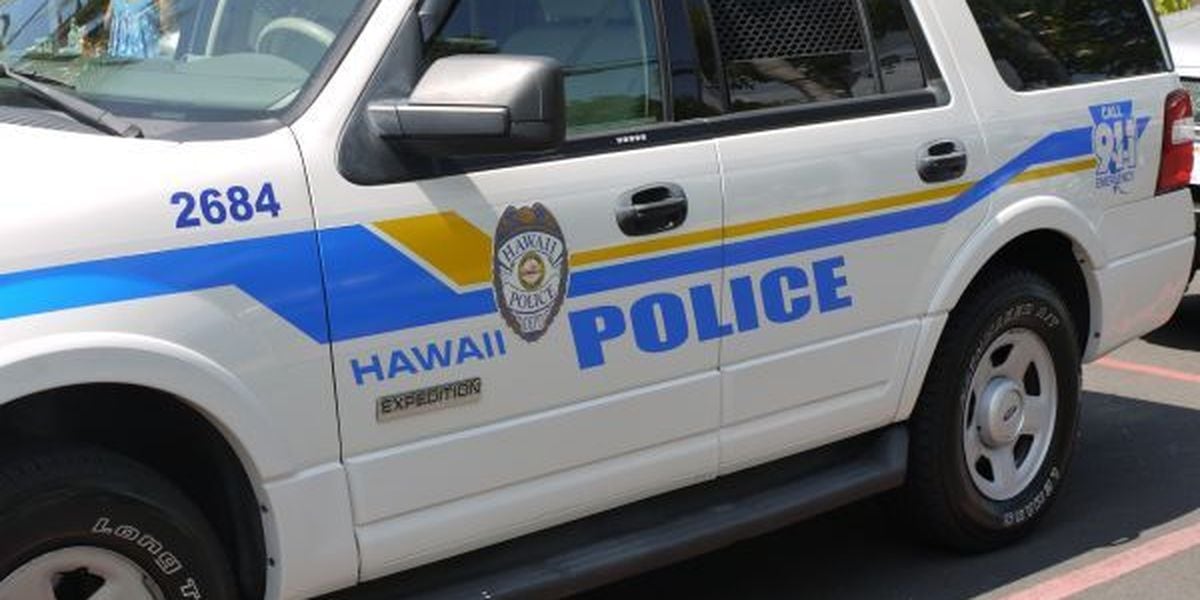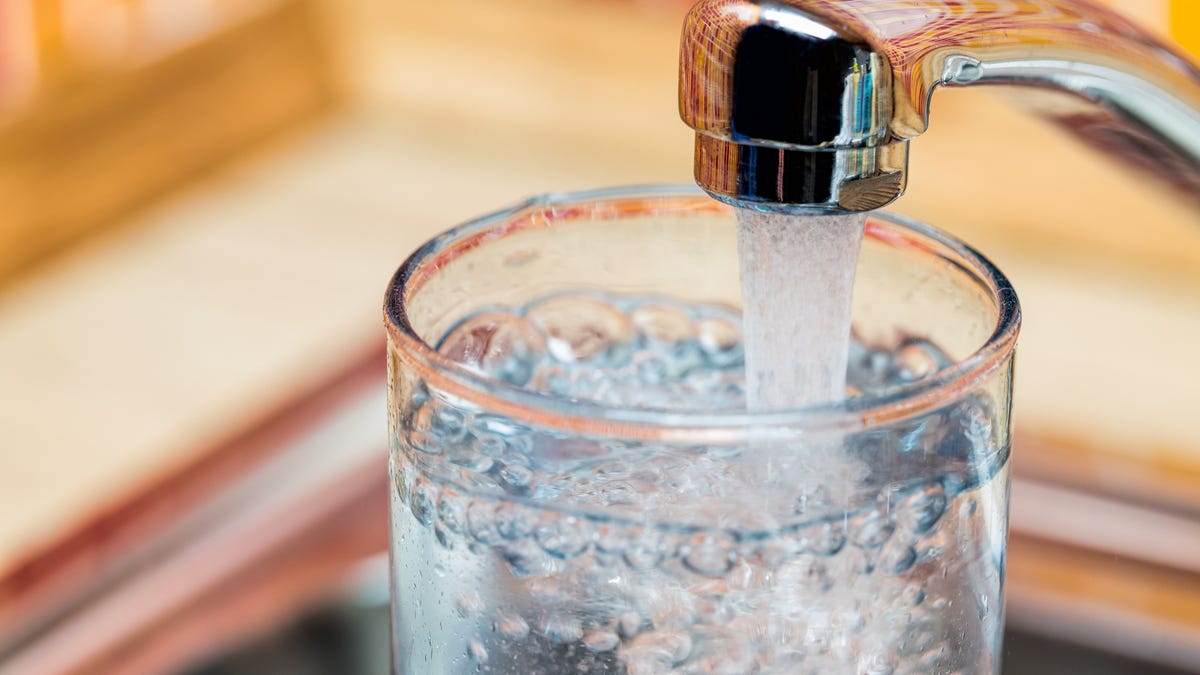Hawaii
Hawaii’s 2021 Red Hill jet fuel leak sickened thousands — but it wasn’t the first: “The system has failed us”

The week of Thanksgiving in 2021 quickly turned from one of fun with family and friends to something described as “post-apocalyptic” on the Hawaiian island of Oahu. Jet fuel had unknowingly leaked from the Department of Defense’s largest underground fuel storage facility and seeped into the system that provides drinking water to thousands of military families and area residents.
Within days, “we were all fighting over water,” Mai Hall, who is Native Hawaiian and a military spouse, told CBS News.
“It was all over the neighborhood. … I was crying putting tape over the faucets because I just could not believe that I couldn’t drink the water, water that has been here for centuries,” she said. “…The system has failed us.”
Hall’s family is one of many still feeling the impacts of that jet fuel exposure even today. But that leak wasn’t the first that has occurred at the U.S. Navy’s Red Hill Bulk Fuel Storage Facility — and it wasn’t the last.
Red Hill’s long history of issues and warnings
The Red Hill Bulk Fuel Storage Facility was built in the early 1940s under a mountain ridge near Honolulu, Hawaii’s capital city, and consists of 20 steel-lined tanks encased in concrete. Each of those tanks is 250 feet tall, 100 feet in diameter and can hold roughly 12.5 million gallons of fuel — large enough to fit the Statue of Liberty from the top of the base to the torch.
Ernest Lau, manager and chief engineer of the Honolulu Board of Water Supply, told CBS News that the Navy’s records show at least 72 documented fuel releases from the facility.
“Probably over 180,000 gallons of fuel of different types that has been released over its 80-year history,” Lau said.
Navy Closure Task Force–Red Hill, which is overseeing the defueling and permanent closure of the site, told CBS News that while reports have identified approximately 70 fuel releases since the site was opened in 1942, the Navy has “accepted 58 of those claims” as part of a 2021 Contested Case Hearing. The Navy is working on confirming the number of releases of fuel and aqueous film forming foam (AFFF) —a fire suppressant that contains PFAS, otherwise known as “forever chemicals” that have been linked to a wide range of health issues, including cancers.
The most recent of those major fuel spills was in the fall of 2021, impacting Hall’s family. Initial reports from the Navy indicated there was a spill of 14,000 gallons at this time, but it was later determined that 19,377 gallons of jet fuel spilled when a cart hit and cracked a fire suppression system pipe that had been containing the fuel since it leaked out of a tank earlier in the year.
But two years before that, a risk analysis conducted by the Navy found a 27.6% chance “of an initiating event resulting in a fuel release between 1,000 and 30,000 gallons.”
That analysis was conducted after a spill was announced at the facility on Jan. 13, 2014, which at the time was holding three types of fuel — JP-5, JP-8 and diesel marine fuel, all of which are known to be harmful to human health when chronically exposed. The leak occurred when one of the underground tanks “experienced a release of 27,000 gallons of fuel due to a contractor’s error and an ineffective response and oversight,” the Navy says on its website.
The EPA wasn’t verbally notified until three days later and written notification to the EPA wasn’t issued until 10 days later.
“They didn’t even know that a spill had happened until someone actually checked on the tank and noticed that there was about a foot and a half of fuel that was missing,” Kamanamaikalani Beamer, a professor at the University of Hawaii Center for Hawaiian Studies, told CBS News. At the time, he was serving on the Water Resource Management Commission.
“The tanks are severely corroded,” he said. “I mean some of them, less of the thickness of a dime is the barrier between 100 million gallons of fuel and leakage.”
The task force told CBS News that “all fuel tanks experience corrosion” and that the Navy used “several strategies” to counteract it, including tank cleaning, inspection and repair, a process known as TIRM.
At the time of the spill, Beamer questioned Navy officials during meetings with the commission about the extent of the issue and how it could have occurred. He believes the incident was “probably the first large-scale spill that really caught everyone’s attention.” And while the Navy ultimately agreed to an Order of Consent with the health department, EPA and others, the commission still “worried that it might fail,” Beamer said.
“They assured me this would never happen again. This was just because of one faulty tank and they were going to come up with a whole system to fix the tanks,” he said. “…They assured me it was the most state-of-the-art facility. They looked me in the eye and told me … ‘We drink from the same aquifer as everyone, we would never poison our own people.’ And they lied, they lied about all of it.”
“We take our environmental stewardship seriously,” Capt. Mark Wheeler, the commander officer at the time of the Fleet Logistics Center Pearl Harbor, said in a press release about the incident. “Our military personnel and families live here and drink the water, too.”
The 2014 spill was not the only incident involving Red Hill and other Naval operations.
“There were a number of warnings,” Wayne Tanaka, director of the Sierra Club of Hawai’i, told CBS News. “…There’s been multiple instances where even under the extreme scrutiny that was being applied to the Red Hill facility, the Navy simply could not operate in a manner that was safe for the environment and safe for people.”
As far back as 2017, the EPA said the “aging” facility posed a “significant environmental threat to Oahu’s groundwater.”
An Administrative Order on Consent between the EPA, Hawai’i State Department of Health, the U.S. Navy and the Defense Logistics Agency in 2015 shows that the Navy’s first-ever report to the Department of Health over a leak at the facility was in November 1998, “when petroleum-stained basalt cores were discovered beneath the tanks.” In the early 2000s, staining was found beneath 19 of the 20 tanks.
In 2012, the Hawai’i DOH issued an $80,000 fine to the Navy Public Works Center Makalapa Compound, a base yard for maintenance activities for Pearl Harbor Navy Region Hawai’i, after an inspection the year prior found they “failed to make a hazardous waste determination for corrosive wastes generated.” Instead of handling materials as hazardous waste, the DOH said they were “disposed of in the trash,” and that hazardous paints and fuels were stored in open containers, violating requirements.
A December 2021 emergency order from the Hawai’i DOH shows a litany of issues stemming from the facility.
On March 17 and June 2, 2020, there was a “release of a regulated substance to surface water.” And then in May 2021, just months before the catastrophic jet fuel leak at Red Hill, 1,618 gallons of fuel was released from a pipeline, 1,580 gallons of which was recovered. The missing fuel was “released into the environment,” the order says.
Two months later, another 150 gallons of a “regulated substance” was released at Kilo Pier into the surface water, roughly 110 gallons of which was recovered.
“Given the number of incidences that have occurred at the Facility within the last year, and in view of the current drinking water contamination, the Respondent [the U.S. Navy] has not demonstrated that immediate and appropriate response actions are available, and therefore cannot ensure that immediate and appropriate response actions will be available should another release occurs in the future,” the order states. “The risk of any additional contaminants in the aquifer or lack of immediate action now may exacerbate the current situation and further jeopardize our aquifer system.”
Despite long standing issues, Tanaka said it wasn’t until the November 2021 incident that local and federal officials took significant action.
“And that’s really scary because we can’t afford to have another incident like this happen again,” he said. “…The state has likened [Red Hill] to a ticking time bomb. … So the threat is immense. The threat is existential.”
As fuel spill victims head to trial, Navy continues effort to shut down the site
On Monday, victims who were impacted by the 2021 fuel contamination headed to trial to seek financial compensation from the U.S. government. Many of those who drank, bathed in and used tainted water for dishes and laundry say they are still dealing with various health impacts, including children.
The trial comes just under a year after attorneys for the Department of Justice filed a joint stipulation that stated “the United States does not dispute” the 2021 spill “caused a nuisance” and that the U.S. “breached its duty of care to the Resident Plaintiffs to exercise ordinary care in the operation of Red Hill.”
Since the 2021 spill and an additional leak of AFFF in 2022, the DOJ has ordered the permanent closure of the site. As of April 2024, “the vast majority of fuel and AFFF concentrate have been removed from the facility,” the task force told CBS News. However, there are still thousands of gallons of contaminants that remain in the site.
The task force said there’s an estimated 28,000 gallons of sludge in the 14 tanks. That waste is a mixture of fuel, water, direct, metal particles and microorganisms that form at the bottom of fuel tanks. Once removed, it will be stored in hazardous waste containers to be disposed of on the U.S. mainland.
There is also an estimated 4,000 gallons of residual fuel that must be removed from across nearly 10 miles of pipelines, the task force said.
“Our team will remove residual fuel before removing small sections of pipe, applying exacting safety protocols for each activity. The risk to the environment has been significantly reduced after removing approximately 104 million gallons of fuel during defueling and with the recent removal of over 1,000 gallons of AFFF from the facility,” the task force said, adding that the AFFF had been a “major threat to the aquifer.”
Tank cleaning operations could start soon, and will take place two tanks at a time. It’s expected that the cleaning process will take roughly 2 and a half years to complete. Removing the pipeline system will also take about 2 and a half years.
The task force added that “the health and welfare of all Navy drinking water users is the most important priority,” and said it will “continue our work to ensure the water continues to meet and comply with all state and federal safe drinking water requirements.”

Hawaii
Authorities identify man killed in Hawaii Island motorcycle crash

HONOLULU (HawaiiNewsNow) – Hawaii Island police have identified the 59-year-old man who died in a motorcycle crash in Ka’u last Thursday.
The victim was identified as Andre Joseph Fournier Sr. from Ocean View.
According to police, at about 5:37 p.m., Fournier was riding a motorcycle south on Mamalahoa Highway (Route 11) and had overtaken several vehicles near the Manuka State Park entrance.
Officials say after passing the vehicles, Fournier allegedly crossed double solid yellow lines and struck a rock embankment on the Mauka side of the highway.
He was ejected from the motorcycle and was taken to Kona Community Hospital, where he was pronounced dead at 10:30 p.m.
Officials say the crash is being investigated as a coroner’s inquest.
Anyone who may have witnessed the collision is asked to contact Officer Adam Roberg at (808) 326-4646 ext. 229 or call Crime Stoppers at (808) 961-8300.
Fournier’s death is the 18th traffic fatality this year compared to 8 at the same time last year.
Copyright 2024 Hawaii News Now. All rights reserved.
Hawaii
Iran moves to project stability after crash kills key leaders

Iran sought to project a sense of order and control Monday by quickly naming an acting president and foreign minister a day after a helicopter crash killed both leaders. The change in leadership came at a time of heightened tensions in the Middle East and domestic discontent in Iran, where many residents have called for an end to decades of repressive clerical rule.
Iran’s supreme leader, Ayatollah Ali Khamenei, announced five days of mourning for the president, Ebrahim Raisi, 63, and the foreign minister, Hossein Amirabdollahian, 60, who died when their helicopter plunged into a mountainous area near the Iranian city of Jolfa. The men had been returning from Iran’s border with Azerbaijan after inaugurating a joint dam project.
Iran’s armed forces said they had created a committee to investigate the crash, which state media attributed to a “technical failure.”
Raisi, a hard-line cleric who came of age during the country’s Islamic Revolution, oversaw a deadly crackdown on protesters as the head of the judiciary in 2019 and as president in 2022. He had been widely viewed as a possible successor to Khamenei, 85.
On Monday, Khamenei named Iran’s first vice president, Mohammad Mokhber, acting president and announced that Mokhber would organize elections for a new president within 50 days. A conservative political operative, Mokhber has a long history of involvement in large business conglomerates closely tied to Khamenei.
Iran’s Cabinet appointed Ali Bagheri Kani, a deputy foreign minister, as the ministry’s “caretaker,” the IRNA state news agency reported. Bagheri Kani has served as Iran’s chief nuclear negotiator and was involved in a deal last year that freed imprisoned Americans in exchange for several jailed Iranians and eventual access to about $6 billion in Iranian funds.
Iranian officials said there would be a public procession in Tabriz, the closest big city to the site of the crash, on Tuesday and that the bodies would then be brought to Tehran for a state funeral.
“Raisi was tireless,” Khamenei said in a statement. “In this very sad incident, the people of Iran have lost a valuable and loyal public servant.”
Analysts in Iran said that while there was speculation about who might be elected as the next president, there was little question about the overall stability of the country or the government. They pointed out that Khamenei will remain supreme leader with power over major state policies.
Despite the official calls for mourning, many Iranians welcomed Raisi’s death, seeing him as one of the key figures in a corrupt regime who oversaw the execution of dissidents, used brutal violence to suppress and kill.
Hawaii
Report: Home Affordability In Hawaii Is 'As Bad As It’s Ever Been'

Only 1 in 5 households in Hawaii can afford to buy a single-family home — a dramatic drop from just three years ago, according to a grim housing report released by the University of Hawaii on Monday.
In 2021, 44% of Hawaii households could afford the mortgage on a median-priced single-family home. That figure is now 20%. As a result, home sales plummeted last year, hitting a 25-year low. But the slump had little impact on prices.
“We haven’t really seen any drop in prices, but there’s this huge increase in what it costs to buy a house because of interest rates,” said Justin Tyndall, an assistant professor of economics with the University of Hawaii Economic Research Organization and the lead author of the report. “Affordability is as bad as it’s ever been.”

High interest rates have had a crippling effect on would-be homeowners in the state by not only making mortgages significantly more unaffordable, but also reducing the number of houses on the market.
A majority of mortgage-holders in the state are paying an interest rate of less than 4%, according to the report, making many homeowners wary of putting their home on the market and trying to purchase something else at a much higher interest rate.
The state’s housing market has also worsened for renters in the last year. Hawaii has the highest median rents in the nation and a majority of renters — 56% — are considered “rent-burdened,” meaning they spend more than 30% of their income on rent.
The Maui fires worsened the state’s housing crisis, causing prices to rise while “the availability of rentals have plummeted,” according to the report.
Vacation Rentals And Out-Of-State Buyers
Short-term vacation rentals make up about 6% of the state’s housing stock, a figure that has grown in recent years but also varies dramatically by island. The number of active short-term rental listings grew 9% statewide between 2022 and 2023. Kauai saw the biggest spike, with a 22% jump in listings.
The number of short-term vacation rentals on Maui has actually increased slightly since the fires, despite the loss of 380 vacation rentals in West Maui and tax incentives for unit owners across the island to convert their units into long-term housing.
“The policy was supposed to incentivize a bigger shift away from vacation rentals and toward housing locals, but we haven’t really seen that in the aggregate,” Tyndall said.
While short-term vacation listings on Maui plummeted after the fire, they are now 2% higher than they were a year ago.


The report also found that “a significant portion of Hawaii’s property owners” are not residents of the state. People from out of state made up 13% of property owners on Oahu and 32% on Maui. More than half of property owners in Lahaina had an out-of-state mailing address.
On Maui, about 85% of vacation rentals are owned by people from out of state, Tyndall said.
Another big takeaway from the overall data, Tyndall said, is that the state isn’t building enough housing to have any real impact on affordability. The state has significant issues with permitting delays, although some progress has been made in the last year in multiple counties, according to the report.
However, strict limits on where multi-family homes can be constructed, along with steep developer fees and permitting delays contribute to the high costs of condos and “reduce the amount of new housing the state.”
“While many households have a preference for single-family homes, building high-rise condominiums can provide many more units, allowing vacancies to propagate across the market, and pushing down housing prices everywhere, including for single-family homes,” the report says.
Converting thousands of vacation rentals into long-term rentals — which Maui’s mayor is proposing to do — could have a really significant impact on affordability, Tyndall said.

Sign up for our FREE morning newsletter and face each day more informed.
-

 News1 week ago
News1 week agoSkeletal remains found almost 40 years ago identified as woman who disappeared in 1968
-

 World1 week ago
World1 week agoIndia Lok Sabha election 2024 Phase 4: Who votes and what’s at stake?
-

 World1 week ago
World1 week agoUkraine’s military chief admits ‘difficult situation’ in Kharkiv region
-

 Movie Reviews1 week ago
Movie Reviews1 week agoAavesham Movie Review
-

 World1 week ago
World1 week agoCatalans vote in crucial regional election for the separatist movement
-

 News1 week ago
News1 week agoTrump, Reciting Songs And Praising Cannibals, Draws Yawns And Raises Eyebrows
-

 Movie Reviews1 week ago
Movie Reviews1 week agoUnfrosted Movie Review: A sweet origins film which borders on the saccharine
-

 Politics1 week ago
Politics1 week agoNorth Dakota gov, former presidential candidate Doug Burgum front and center at Trump New Jersey rally























